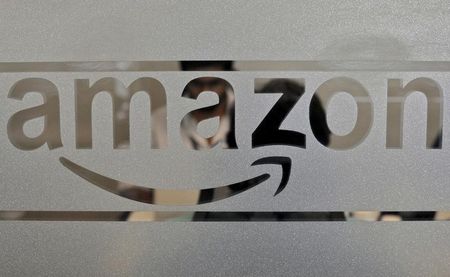Uncategorized
Bill Gates just won legal approval to buy 2,100 acres of North Dakota farmland worth $13.5M — and people are ‘livid’ about it all across the state


Bill Gates made his fortune in tech, but he’s now betting big on something completely different: farmland.
Last week, Gates secured the legal approval for purchasing 2,100 acres of farmland from northeastern North Dakota potato growers Campbell Farms.
Of course, this isn’t first time Gates has invested in the asset class. Having amassed nearly 270,000 acres of farmland across dozens of states, Gates is already the largest private owner of farmland in America.
Let’s take a closer look at the approval.
Don’t miss
Betting (on) the farm
Gates’ purchase of farmland in North Dakota initially raised concerns because of a Depression-era law that prohibits corporations and limited liability companies from owning farmland in the region.
North Dakota’s Agriculture Commissioner Doug Goehring previously told KFYR-TV — a television station in Bismarck, North Dakota — that many people weren’t thrilled about the news.
“I’ve gotten a big earful on this from clear across the state, it’s not even from that neighborhood. Those people are upset, but there are others that are just livid about this,” Geohring said.
However, the anti-corporate farming law does allow individual trusts to own farmland if it is leased to farmers — and that’s what Gates’ firm plans to do.
On Wednesday, North Dakota’s Attorney General issued a letter saying that the purchase complied with the law.
A recession-resistant asset
You don’t need an MBA to see the appeal of farmland.
Markets can go up or down, but no matter what happens, people still need to eat.
That makes farmland intrinsically valuable.
And it just so happens that Gates’ good pal Warren Buffett also likes the asset.
In fact, Buffett bought a 400-acre farm in Nebraska back in 1986. “I needed no unusual knowledge or intelligence to conclude that the investment had no downside and potentially had substantial upside,” Buffett later wrote.
At Berkshire’s annual shareholders meeting earlier this year, Buffett mentioned farmland again as one of the two assets he’d buy instead of Bitcoin.
“If you said, for a 1% interest in all the farmland in the United States, pay our group $25 billion, I’ll write you a check this afternoon,” he said.
No need to be a billionaire
While the ultra-rich have been acquiring farmland, you don’t need to be a billionaire to get a piece of the action.
Publicly traded real estate investment trusts — that specialize in owning farms — allow you to do it with as little money as you’re willing to spend. You don’t need to know how to work the farm, either — just sit back, relax, and enjoy the dividend checks rolling in.
Gladstone Land (LAND), for instance, owns 164 farms totaling 113,000 acres. It pays monthly distributions of $0.0454 per share, giving the stock an annual dividend yield of 2.5%.
Then there’s Farmland Partners (FPI), a REIT with a farmland portfolio of 185,000 acres and an annual dividend yield of 1.8%.
If you are looking for options outside the stock market, there are investing services that allow you to invest in farmland as well.
What to read next
This article provides information only and should not be construed as advice. It is provided without warranty of any kind.
Uncategorized
BofA Securities maintains Amazon.com at ‘buy’ with a price target of $154.00
Uncategorized
Six people in critical condition, one still missing after Paris blast – prosecutor

5/5
© Reuters. French firefighters and rescue forces work after several buildings on fire following a gas explosion in the fifth arrondissement of Paris, France, June 21, 2023. REUTERS/Gonzalo Fuentes
2/5
PARIS (Reuters) – Six people remained in a critical condition and one person was believed still missing on Thursday, one day after a blast ripped through a street near Paris’ historic Latin Quarter, the city’s public prosecution office said. “These figures may still change,” prosecutor Maylis De Roeck told Reuters in a text message, adding that around 50 people had been injured in the blast, which set buildings ablaze and caused the front of one to collapse onto the street. Of two people initially believed missing, one has been found in hospital and is being taken care of, the prosecutor said, adding: “Searches are ongoing to find the second person.” Authorities have not yet said what caused the explosion, which witnesses said had followed a strong smell of gas at the site. The explosion led to scenes of chaos and destruction in the historic Rue Saint Jacques, which runs from the Notre-Dame de Paris Cathedral to the Sorbonne University, just as people were heading home from work. It also destroyed the facade of a building housing the Paris American Academy design school popular with foreign students. Florence Berthout, mayor of the Paris district where the blast occurred, said 12 students who should have been in the academy’s classrooms at the time had fortunately gone to visit an exhibition with their teacher.
“Otherwise the (death toll) could have been absolutely horrific,” Berthout told BFM TV. She said three children who had been passing by at the time were among the injured, although their lives were not in danger.
Uncategorized
4 big analyst cuts: Alcoa & DigitalOcean shares drop on downgrades

© Reuters.
Here is your Pro Recap of the biggest analyst cuts you may have missed since yesterday: downgrades at Alcoa, DigitalOcean, Teleflex, and Xcel Energy.InvestingPro subscribers got this news in rapid fire. Never be left in the dust again.Alcoa stock drops on Morgan Stanley downgrade Alcoa (NYSE:) shares fell more than 3% pre-market today after Morgan Stanley downgraded the company to Underweight from Equalweight and cut its price target to $33.00 from $43.00, as reported in real time on InvestingPro.The firm sees a significant decline in consensus estimates, and as negative earnings revisions materialize, it believes the stock will face downward pressure and underperform.The analyst’s estimates for EBITDA in Q2, 2023, and 2024 are substantially lower than the consensus. The stock is currently trading above its historical average. The firm said its downward revisions in earnings estimates and price target are attributed to the company’s high operating leverage to aluminum prices.DigitalOcean stock plunges on downgradePiper Sandler downgraded DigitalOcean (NYSE:) to Underweight from Neutral with a price target of $35.00. As a result, shares plunged more than 5% pre-market today.The company reported its last month, with revenue beating the consensus estimate, while EPS coming in worse than expected. Furthermore, the company provided a strong outlook, which was above the Street estimates.2 more downgradesTeleflex (NYSE:) shares fell more than 3% yesterday after Needham downgraded the company to Hold from Buy, noting that UroLift expectations may still be too high.According to Needham, their checks indicate that urologists are reducing their use of UroLift due to its retreatment rates, reimbursement cuts, and increasing use of competing procedures. This is also supported by their Google Trends data analysis, which indicates decreasing search interest in UroLift.BMO Capital downgraded Xcel Energy (NASDAQ:) to Market Perform from Outperform and cut its price target to $64.00 from $69.00 to reflect the lower-than-expected terms of the company’s regulatory settlement in Colorado.Amid whipsaw markets and a slew of critical headlines, seize on the right timing to protect your profits: Always be the first to know with InvestingPro.Start your free 7-day trial now.

 Forex3 years ago
Forex3 years agoForex Today: the dollar is gaining strength amid gloomy sentiment at the start of the Fed’s week

 Forex3 years ago
Forex3 years agoUnbiased review of Pocket Option broker

 Forex3 years ago
Forex3 years agoDollar to pound sterling exchange rate today: Pound plummeted to its lowest since 1985

 Forex3 years ago
Forex3 years agoHow is the Australian dollar doing today?

 Cryptocurrency3 years ago
Cryptocurrency3 years agoWhat happened in the crypto market – current events today

 World3 years ago
World3 years agoWhy are modern video games an art form?

 Commodities3 years ago
Commodities3 years agoCopper continues to fall in price on expectations of lower demand in China

 Economy3 years ago
Economy3 years agoCrude oil tankers double in price due to EU anti-Russian sanctions


























